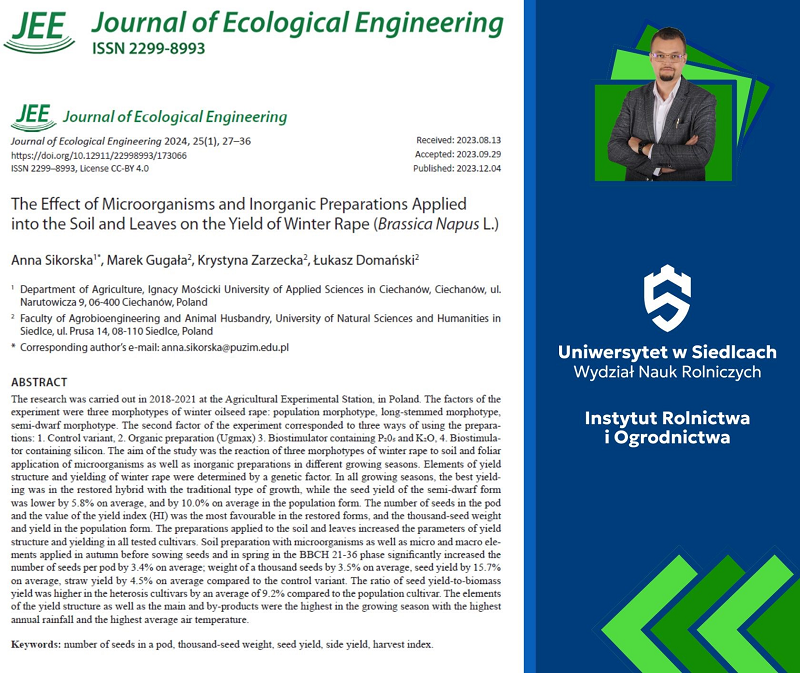
Another scientific article has been published, co-authored by Lukasz Domanski, M.Sc., a doctoral student at the Doctoral School of the University of Siedlce, in the discipline
of agriculture and horticulture. The article was published in the peer-reviewed scientific journal Joural of Ecological Enfineering (IF2022: 1.3 | CiteScore2022: 2.6 | MNiSW: 70pts | H-index: 27).
The research was carried out in 2018-2021 at the Agricultural Experimental Station, in Poland. The factors of the experiment were three morphotypes of winter oilseed rape: population morphotype, long-stemmed morphotype, semi-dwarf morphotype. The second factor of the experiment were three ways of using the preparations: 1. Control variant, 2. Organic preparation (Ugmax) 3. Biostimulator containing P₂0₅ and K₂O, 4. Biostimulator containing silicon. The aim of the study was the reaction of three morphotypes of winter rape to soil and foliar application of microorganisms and inorganic preparations in different growing seasons. Elements of yield structure and yielding of winter rape were determined by a genetic factor. In all growing seasons, the best yielding was in the restored hybrid with the traditional type of growth, while the seed yield of the semi-dwarf form was lower by 5.8% on average, and by 10% on average in the population form. The number of seeds in the pod and the value of the yield index (HI) was the most favourable in the restored forms, and the thousand-seed weight and yield in the population form. The preparations applied to the soil and leaves increased the parameters of yield structure and yielding in all tested cultivars. Soil preparation with microorganisms as well as micro and macro elements applied in autumn before sowing seeds and in spring in the BBCH 21-36 phase significantly increased the number of seeds per pod by 3.4% on average; weight of a thousand seeds by 3.5% on average, seed yield by 15.7% on average, straw yield by 4.5% on average compared to the control variant. The ratio of seed yield to biomass yield was higher in the heterosis cultivars by an average of 9.2% compared to the population cultivar.


